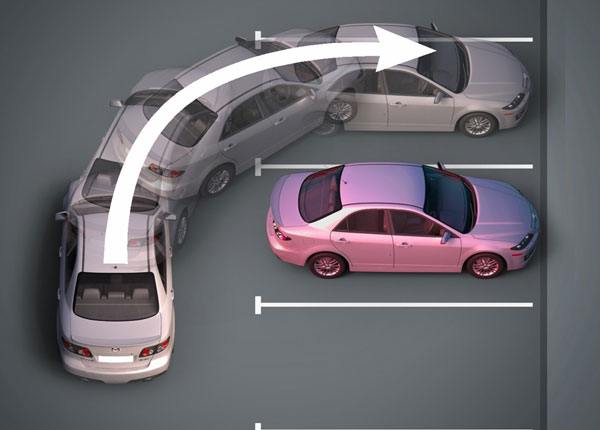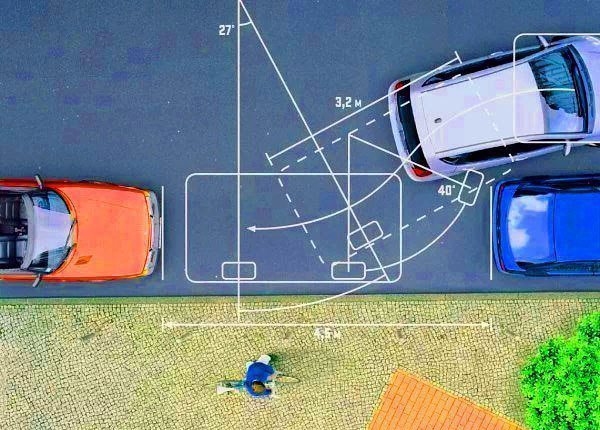
Perpendicular 90 Degree Parking: Tips and Step-by-Step Tutorial
Updated Nov. 20, 2020Once you are relatively adept at angle parking, mastering perpendicular parking is your next challenge. Perpendicular parking is a little harder than angle parking, though not so difficult as parallel parking. Like all driving maneuvers, practice makes perfect. Always choose an empty or quiet parking lot to begin working on this style of parking, to minimize the risk of colliding with other vehicles while you find your feet.
Also known as 90-degree parking, perpendicular parking uses spaces that are arranged at a 90-degree angle in relation to the parking lot lanes. Drivers may enter a perpendicular parking space head-on or in reverse – there is a great deal of debate among highway and traffic safety experts as to which method is better. As reversing is always more challenging, you should begin by mastering the head-on perpendicular parking method and progress to backing-up later.
Step-by-step instructions
Follow these step-by-step instructions when you start practicing 90-degree, head-on parking:
- 1

Choose a parking spot. You will get on better with parking spaces on the left as opposed to those on the right, as your vehicle will have more room to maneuver.
- 2

Activate your indicators or use hand signals to communicate your intention to turn into the space.
- 3

Approach the parking space slowly. Do not begin to turn until your side mirror has passed the center of the space BEFORE the one in which you wish to park. Having practiced the maneuver a couple of times you can adjust this reference point to suit your vehicle. Some drivers will need to wait until their mirror lines up with the start of their intended space.
- 4

Turn the steering wheel sharply toward the parking space.
- 5

Adjust the steering wheel to center your vehicle as you pull into the space.
- 6

Drive forward slowly and stop at the end of the parking spot.
Reverse perpendicular parking
New drivers should not begin working on backing into a 90-degree parking space until they can comfortably drive in forwards. Reversing is always harder as you will need to see behind your vehicle while using the pedals and steering wheel in front of you. It is essential that you practice reverse perpendicular parking in an empty or almost empty parking lot, as you are unlikely to get it right the first time. Making mistakes with other vehicles around you could mean injuring somebody or damaging another car.
When you are comfortable with head-on and reverse perpendicular parking, which you use most often is a matter of personal choice. Both have their advantages, though many experts recommend reversing into a 90-degree space, as it means you will not need to back out into moving traffic.

To practice reverse perpendicular parking, follow these steps:
- 1

Choose a parking space on the right.
- 2

Communicate your intention to turn into the parking space, using indicators or hand signals.
- 3

Drive forward and slightly beyond your parking space, until your side-view mirror lines up with the first line of the next space.
- 4

Check for opposing traffic and use your mirrors to make sure no vehicles are approaching from behind.
- 5

Steer sharply to the left and continue driving until your car is at a 45-degree angle relative to the parking space. The left corner of the vehicle on the right and the right corner of the vehicle on the left should be visible in your side-view mirrors.
- 6

Stop, and shift your vehicle into “reverse”. Check around the vehicle for pedestrians and obstacles before back into the parking spot.
- 7

Keep your wheels straight and back up slowly.
- 8

When the rear of your vehicle is nearly in the center of the space, steer sharply to the right to straighten up.
- 9

Continue reversing until your car is completely in the parking space. Be careful not to pull up too close to rear obstacles such as walls or other vehicles.
Perpendicular parking tips
Try not to get frustrated if you do not master this maneuver right away – it can be tricky! Instead, keep these perpendicular parking tips in mind and give it another go.
- Give yourself as much space as possible. Start the maneuver with at least eight feet between your vehicle and the car you are parking next to. This should allow you enough room to pull into the perpendicular space.
- Choose a left-hand parking space over a right-hand parking space. As you will be approaching the spot from the right side of the lane, you will have far more space the turn and correctly align yourself when approaching a perpendicular space on the left.
- Make sure you are not turning too soon – this is a real problem for many novice drivers. Your side-view mirror must at least clear the center of the space prior to the one you will be using. If you end up straddling the first line of your space, you have turned too early. Adjust your reference point and begin turning at the first line of your parking space to see if that situates your vehicle correctly.




